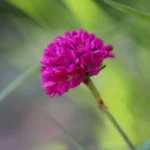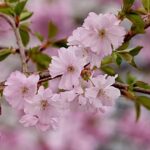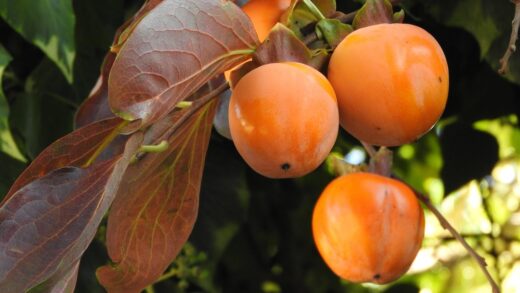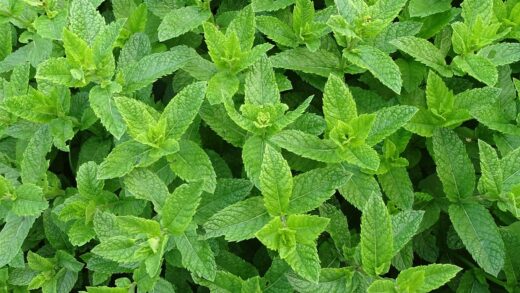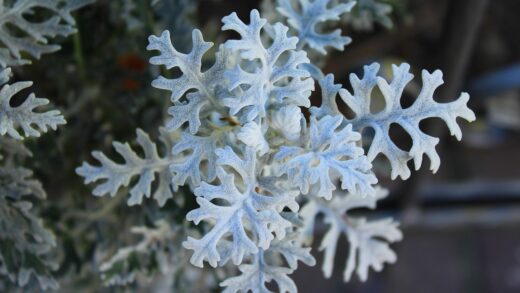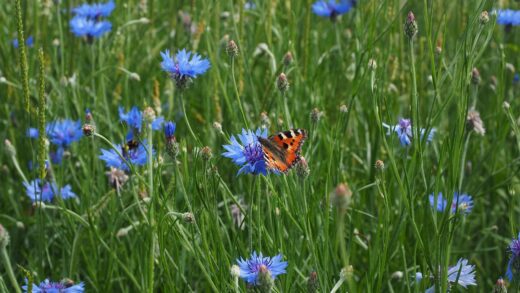Understanding the essence of Lithodora diffusa, often celebrated for its strikingly vibrant, gentian-blue flowers, is the first step toward successful cultivation in any garden setting. This low-growing, evergreen sub-shrub brings a splash of unparalleled color, primarily in late spring and early summer, creating a mat-like ground cover that is both beautiful and functional. Its appeal lies not just in its intense blooms but also in its fine-textured, dark green foliage that provides year-round interest. To truly unlock its potential, one must appreciate its specific needs, which are deeply rooted in its native habitat of acidic, sandy heathlands in southwestern Europe. Mimicking these conditions is paramount, as this plant is notoriously intolerant of alkaline soils, a characteristic that often leads to failure in unsuitable garden environments. Therefore, a successful grower is one who pays meticulous attention to the foundational elements of its care.
At the heart of nurturing a thriving Lithodora is the provision of an appropriate growing medium, which cannot be overstated in its importance. The plant demands acidic soil with a pH typically ranging between 5.0 and 6.0, as this acidity is crucial for the uptake of essential nutrients, particularly iron. In soils with a higher pH, the plant will quickly develop chlorosis, a condition where the leaves turn yellow due to an iron deficiency, severely stunting its growth and diminishing its flowering capacity. Consequently, amending the soil with materials like ericaceous compost, peat moss, or sulfur before planting is not just recommended but often essential for its long-term health. This initial soil preparation creates a welcoming environment that supports vigorous root development and overall vitality from the outset.
Beyond soil acidity, drainage is another critical factor that dictates the success or failure of cultivating this magnificent ground cover. Lithodora diffusa possesses a root system that is highly susceptible to rot if left in waterlogged conditions, making excellent drainage an absolute necessity. Gardeners should aim to create a soil structure that is gritty and porous, allowing excess water to move freely away from the roots, especially during periods of heavy rainfall or in winter. Incorporating horticultural grit, sand, or fine gravel into the planting mix can significantly improve the soil’s drainage properties. For those gardening in heavy clay soils, creating raised beds or planting on a slope can provide the ideal elevated and well-drained position this plant craves, preventing the fatal consequences of wet feet.
Finally, while it is a relatively low-maintenance plant once established in the right conditions, ongoing vigilance contributes to its sustained performance and longevity. Regular monitoring of soil moisture, especially during its first growing season, helps the plant establish a deep and resilient root system. Although it is considered somewhat drought-tolerant once mature, it performs best with consistent moisture and will show signs of stress if allowed to dry out completely for extended periods. Furthermore, an annual application of an ericaceous, slow-release fertilizer in early spring can replenish essential nutrients and encourage a profusion of its signature blue flowers, ensuring a spectacular display year after year.
The foundation of success: soil and site selection
Proper site selection is a critical first step that profoundly influences the long-term health and vigor of Lithodora diffusa. This plant thrives in a position that receives full sun to partial shade, with the ideal balance often depending on the specific climate. In cooler, more northern regions, a full sun position is generally preferable as it encourages the most prolific flowering and helps maintain a compact, dense habit. The warmth and light intensity in such a location stimulate the development of flower buds, leading to the spectacular carpet of blue for which the plant is famous. Without adequate sunlight, the plant may become leggy, with sparse foliage and significantly reduced blooming.
More articles on this topic
Conversely, in hotter, more southerly climates, providing some protection from the intense afternoon sun is highly beneficial. A location offering morning sun and light afternoon shade can prevent the foliage from scorching and reduce water stress on the plant during the hottest part of the day. This filtered light still provides enough energy for robust growth and flowering while mitigating the negative impacts of excessive heat. Planting it on an east-facing slope or under the canopy of taller, open-structured plants can create these ideal conditions, allowing the Lithodora to flourish without being subjected to environmental extremes that could compromise its health.
The physical location within the garden also plays a role in its aesthetic and practical success, making it a versatile choice for various designs. It is perfectly suited for rock gardens, where its cascading habit can soften the hard edges of stones and its roots can take advantage of the excellent drainage typically found in such constructions. It also excels as an edging plant along pathways or at the front of borders, where its low, spreading form creates a neat and colorful margin. Furthermore, its ability to spill over the sides of containers and retaining walls makes it a stunning feature plant, adding a vertical dimension of vibrant color to the garden landscape.
Ultimately, the chosen site must also offer protection from harsh winter winds, which can desiccate its evergreen foliage and cause significant damage. Planting it in a sheltered spot, such as near a wall, a fence, or amongst other low-growing shrubs, can create a microclimate that buffers it from the worst of the winter weather. This consideration is particularly important in colder zones where the plant is at the edge of its hardiness range. By carefully evaluating the interplay of light, temperature, and exposure, you can select a site that not only meets the plant’s fundamental requirements but also allows it to thrive and become a long-lasting garden jewel.
Acidity and drainage: the twin pillars of soil preparation
The chemical composition of the soil, specifically its pH level, is arguably the most critical factor in the successful cultivation of Lithodora diffusa. This plant is an obligate calcifuge, meaning it cannot tolerate alkaline or lime-rich soils, and attempting to grow it in such conditions is a common reason for its demise. The ideal soil pH for this species is firmly on the acidic side, typically between 5.0 and 6.0, as this range allows the plant to efficiently absorb iron and other essential micronutrients. In soils with a pH above 6.5, iron becomes chemically locked up and unavailable to the plant’s roots, leading to intervenal chlorosis, where the leaves turn yellow while the veins remain green, ultimately resulting in stunted growth and a lack of flowers.
More articles on this topic
To ensure the soil meets these acidic requirements, it is essential to conduct a soil test before planting. If the existing soil is neutral or alkaline, significant amendments will be necessary to create a suitable growing environment. Incorporating generous amounts of ericaceous compost, which is specially formulated for acid-loving plants, is the most effective approach. Other organic materials such as pine needles, decomposed oak leaves, or peat moss can also help to lower the soil pH over time while simultaneously improving its structure and organic content. For a more immediate effect in moderately alkaline soils, powdered sulfur can be worked into the soil several months before planting, allowing it time to chemically alter the pH.
Alongside acidity, superior drainage is the second non-negotiable requirement for the health of Lithodora’s root system. The plant’s fine roots are highly vulnerable to fungal pathogens that thrive in anaerobic, waterlogged conditions, making root rot a constant threat in heavy, poorly draining soils. The soil must be structured in a way that allows water to pass through freely, ensuring that the roots have access to the oxygen they need to function correctly. This is why the plant naturally thrives in sandy or gravelly locations, and replicating this type of medium is key to its success in a garden setting.
Achieving the necessary drainage often involves amending the native soil with materials that create larger air pockets and improve porosity. The addition of coarse horticultural sand, perlite, or fine gravel is highly effective in breaking up compacted soil and creating channels for water to escape. In areas with naturally heavy clay, which retains excessive moisture, building a raised bed filled with a custom acidic and gritty soil mix is often the best long-term solution. This elevates the root zone above the surrounding waterlogged ground, providing complete control over the growing environment and guaranteeing the sharp drainage that Lithodora diffusa demands for its survival and prosperity.
Watering wisdom: establishing a moisture balance
Achieving the correct moisture balance is crucial for a newly planted Lithodora diffusa to establish a strong and extensive root system. During the first few weeks and months after planting, the soil should be kept consistently moist but never saturated, which encourages the roots to grow outwards and deep into the soil in search of water. This initial period of attentive watering is a critical investment in the plant’s future resilience and drought tolerance. A good practice is to check the soil moisture every few days by inserting a finger about an inch deep; if it feels dry at that depth, it is time to water thoroughly, allowing the moisture to penetrate the entire root zone.
Once the plant is fully established, typically after its first full growing season, it exhibits a surprising degree of drought tolerance, a trait inherited from its Mediterranean origins. A mature Lithodora with a well-developed root system can withstand short periods of dryness without significant stress. However, for the most vibrant foliage and abundant flowering, it is best to provide regular water during prolonged hot and dry spells. Allowing the plant to completely dry out can cause stress, leading to a reduction in flowering and potential dieback of some stems. The key is to avoid a boom-and-bust cycle of extreme dryness followed by heavy drenching.
The method of watering is just as important as the frequency to prevent potential disease issues. It is always best to water the plant at the base, directing the water directly onto the soil around the root zone rather than over the foliage. Wetting the dense mat of leaves can create a humid microclimate that encourages the development of fungal diseases like botrytis or powdery mildew, particularly in warm, damp weather. Applying water in the morning also allows any moisture that does splash onto the leaves to dry quickly in the sun, further minimizing the risk of disease and ensuring the plant remains healthy.
It is also vital to adjust the watering routine in response to seasonal changes and prevailing weather conditions. During the active growing season of spring and summer, when the plant is flowering and temperatures are higher, its water needs will be at their peak. Conversely, as the weather cools in autumn and the plant’s growth slows, the frequency of watering should be significantly reduced. In winter, the plant is largely dormant, and excessive moisture around the roots in cold, wet soil is one of the most common causes of winter kill. Therefore, winter watering should be minimal, only provided during unseasonably dry periods to prevent the roots from desiccating completely.
The art of feeding: providing essential nutrients
Fertilizing Lithodora diffusa is a delicate art that, when done correctly, can significantly enhance its floral display and overall vitality. The primary goal of feeding is to supplement the nutrients that may be lacking in the soil, particularly in sandy or gritty mediums where nutrients can leach out quickly. The most important rule is to use a fertilizer specifically formulated for acid-loving, or ericaceous, plants. These fertilizers are designed to provide nutrients in a form that is readily available in low pH conditions and often contain extra iron and other micronutrients to prevent the onset of chlorosis, which this plant is prone to.
The timing of fertilizer application is critical to ensure the nutrients are available when the plant needs them most. The ideal time to feed Lithodora is in early spring, just as new growth begins to emerge. This provides the plant with the energy it needs to produce a spectacular flush of flowers and develop healthy new foliage. A single application of a slow-release granular ericaceous fertilizer is often sufficient for the entire growing season. This type of fertilizer breaks down gradually over several months, providing a steady and consistent supply of nutrients without overwhelming the plant with a sudden burst of growth.
It is crucial to avoid over-fertilizing, as this can be more detrimental than not fertilizing at all. Excessive nitrogen, in particular, can stimulate lush, soft foliage growth at the expense of flowers, resulting in a leafy but bloom-less plant. This soft growth is also more susceptible to damage from pests, diseases, and frost. Always follow the application rates recommended on the fertilizer packaging, and err on the side of using less rather than more. For container-grown plants, a liquid ericaceous feed applied at half-strength every four to six weeks during the growing season is a suitable alternative to granular fertilizers.
Beyond manufactured fertilizers, incorporating organic matter into the soil provides a natural and slow-releasing source of nutrients. An annual top-dressing of well-rotted ericaceous compost, pine bark fines, or composted oak leaves in the autumn can help to maintain soil acidity and fertility. As these materials decompose, they gradually release a balanced range of nutrients and improve the soil’s structure and water-retention capabilities. This holistic approach to feeding not only supports the health of the Lithodora but also nurtures a thriving soil ecosystem, contributing to the long-term sustainability and beauty of the garden.
Pruning and maintenance: shaping for health and beauty
Pruning is a simple yet vital aspect of Lithodora care that helps maintain the plant’s shape, vigor, and flowering potential. The primary time for pruning is immediately after the main flowering period has finished, which is typically in early to mid-summer. This timing is crucial because it allows the plant ample time to produce new growth and set flower buds for the following year. Pruning too late in the season can remove these developing buds, resulting in a disappointing lack of flowers the next spring. The goal of this post-flowering trim is to tidy up the plant and encourage a dense, compact habit.
The technique for pruning Lithodora is straightforward and does not require intricate skills; a light shearing is all that is needed. Using a pair of sharp garden shears or secateurs, trim back the entire plant by about one-third, focusing on removing the spent flower stems and any straggly or wayward growth. This light haircut prevents the plant from becoming woody and open in the center, a common issue with older specimens. The process stimulates the growth of new shoots from the base and sides of the plant, resulting in a fuller, more attractive mound of foliage for the remainder of the year.
It is important to avoid cutting back into the old, woody parts of the plant, as Lithodora does not readily regenerate from old wood. The pruning cuts should always be made in the green, leafy part of the stems where there are active growth nodes. A hard renovation prune is generally not successful and can often kill the plant. If a plant has become very woody and leggy, it is often better to replace it or to propagate new plants from healthy tip cuttings taken before the plant deteriorates too far. This gentle and regular approach to pruning is key to its longevity.
Beyond the main annual prune, ongoing maintenance throughout the growing season involves minimal effort but contributes to the plant’s overall appearance and health. Periodically deadheading any sporadic flowers that appear after the main flush can keep the plant looking tidy, although it is not essential for reblooming. It is also good practice to remove any dead, damaged, or yellowing leaves as they appear. This simple housekeeping improves air circulation through the dense mat of foliage and removes potential sites for pests and diseases to take hold, ensuring the plant remains a vibrant and healthy component of the garden.









